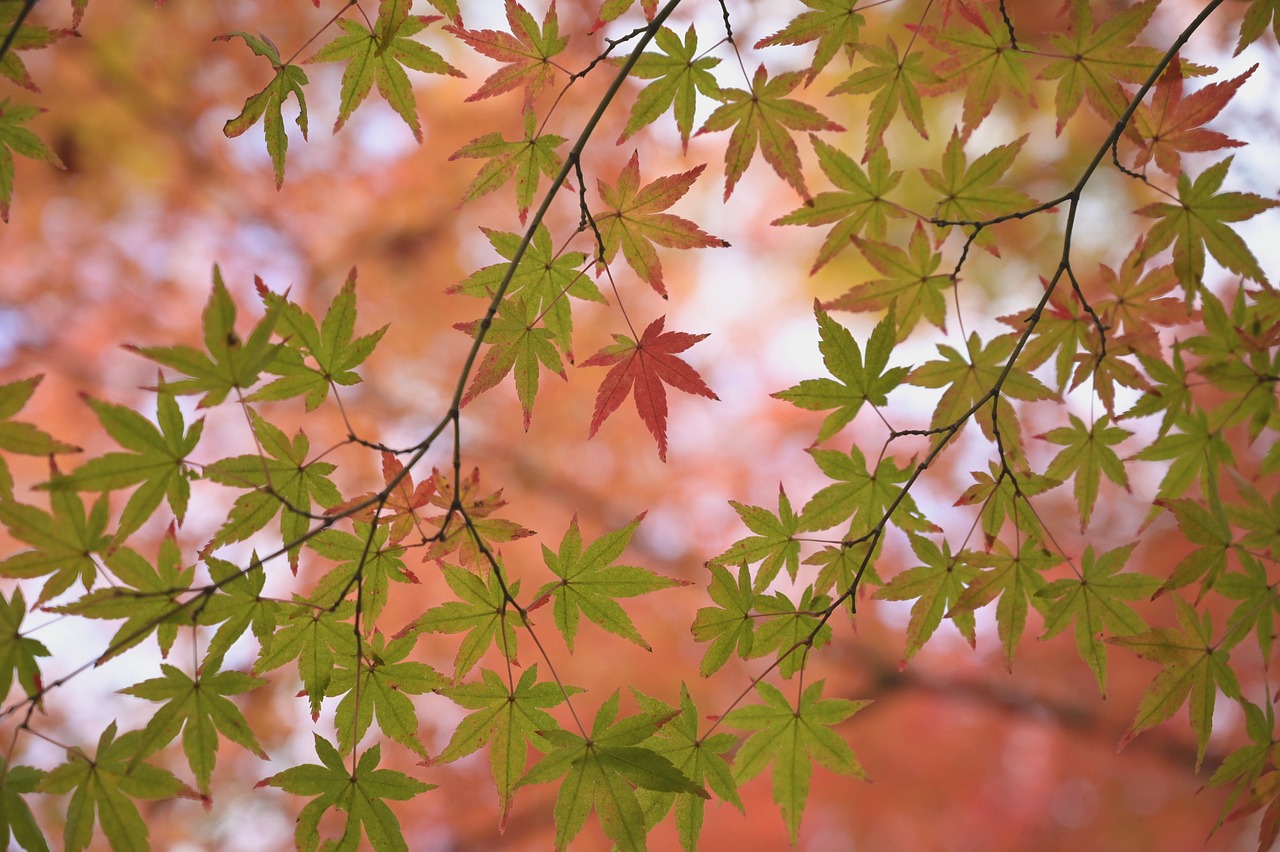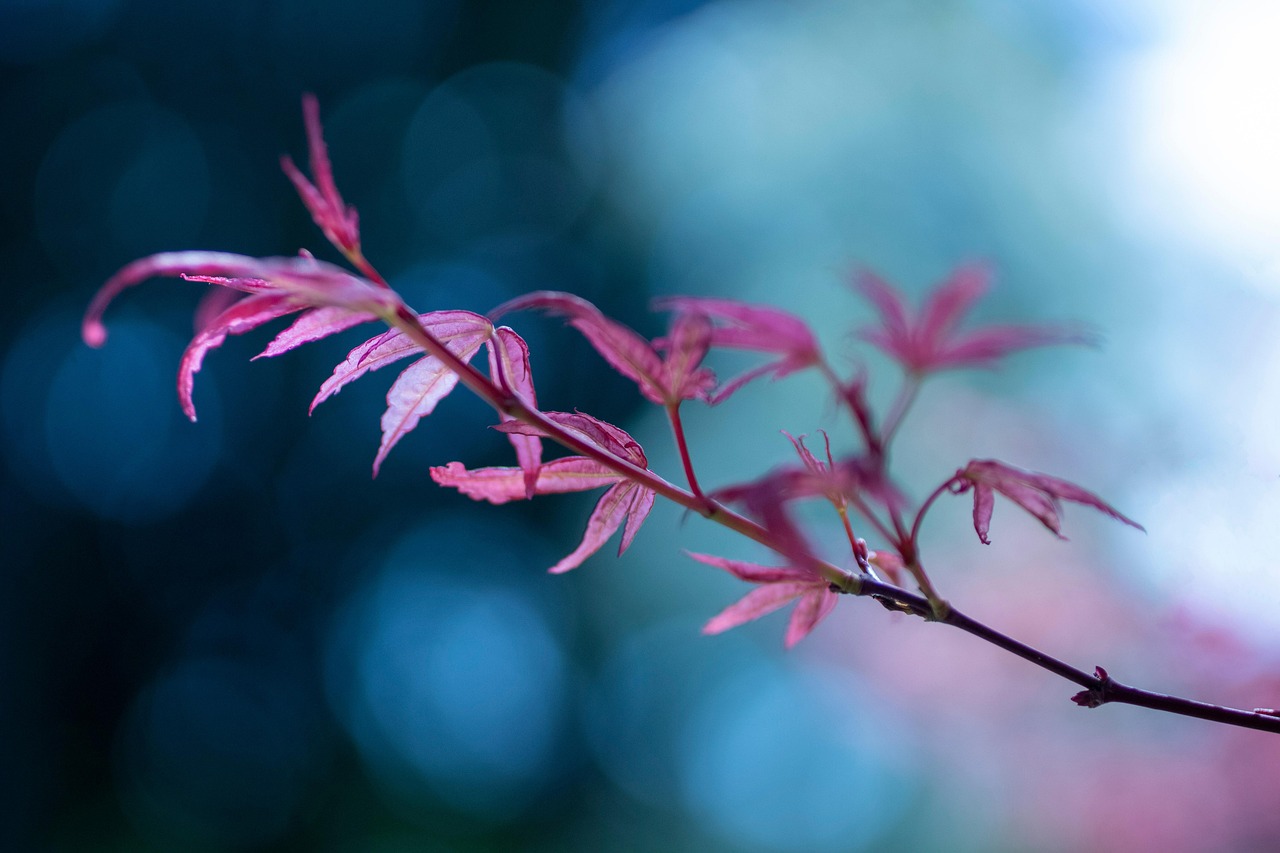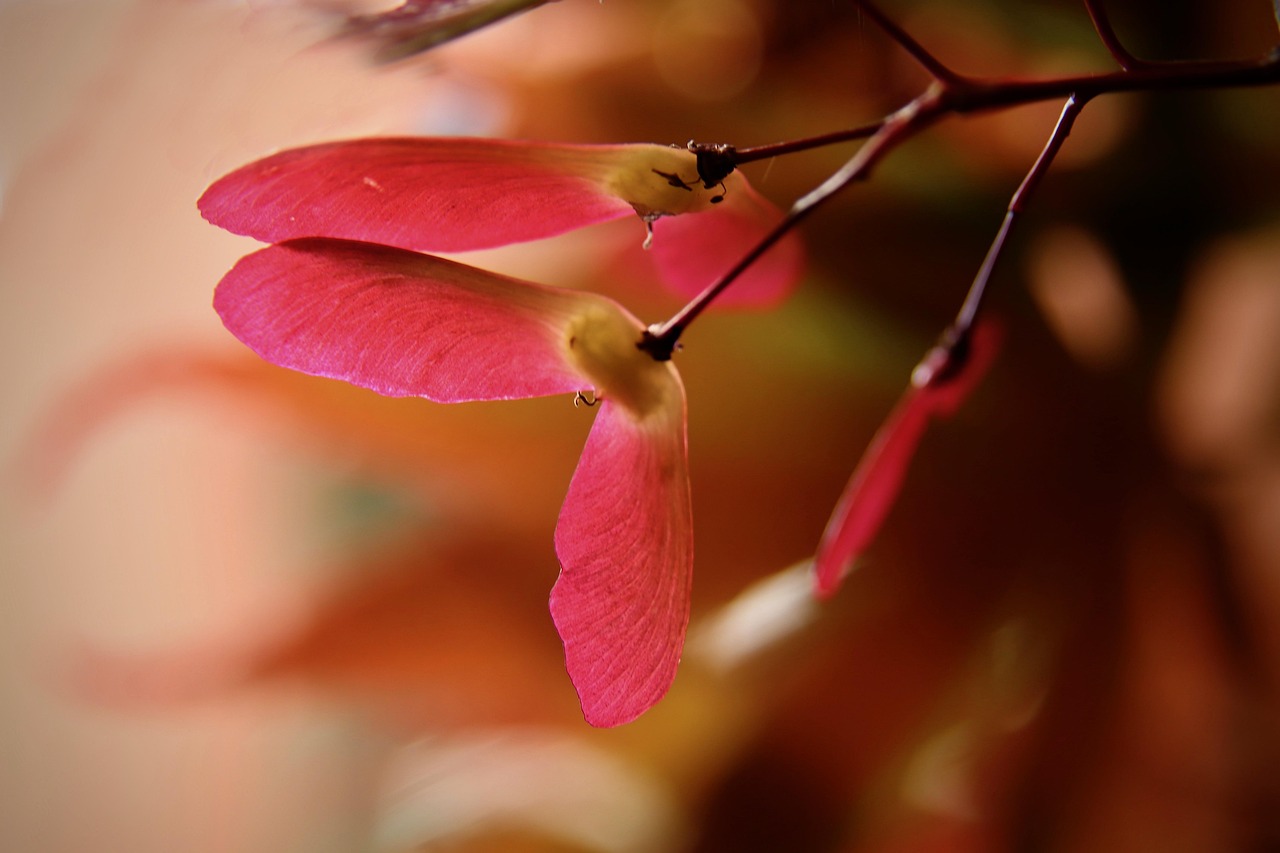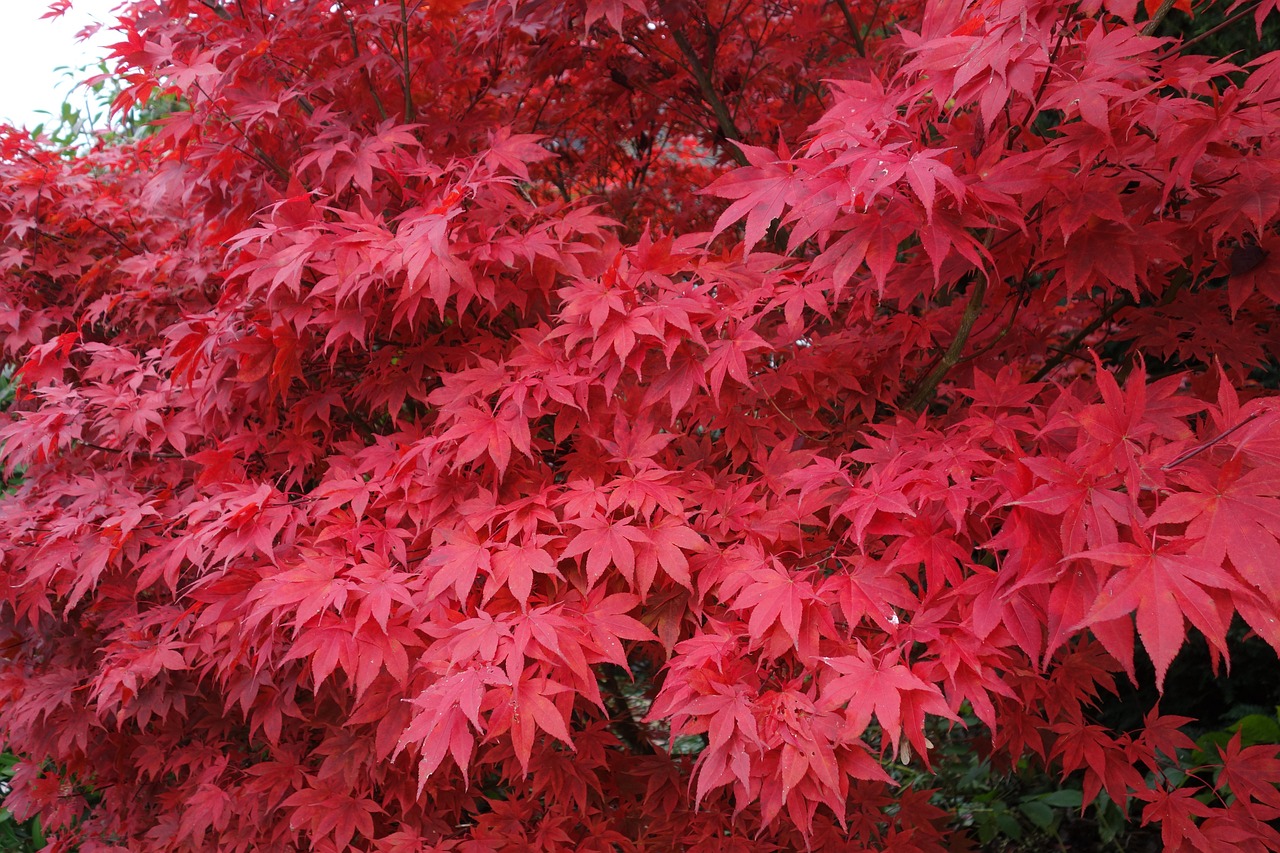Pruning Japanese maple trees effectively can enhance their stunning autumn colors. By removing dead or crowded branches, you allow more sunlight to reach the leaves. This promotes healthy growth and vibrant fall foliage.
Japanese maple trees, known for their delicate leaves and beautiful branching structure, are a favorite among gardeners and landscapers. These trees are particularly admired for their stunning colors in autumn, ranging from vibrant reds to brilliant oranges and yellows. However, to achieve the best display of fall colors, proper pruning techniques are essential.

Pruning is not just about maintaining the shape of the tree. It also plays a critical role in the tree’s health and vigor. Without regular pruning, Japanese maples can become dense and overgrown. This can lead to poor air circulation, increased susceptibility to diseases, and a diminished display of autumn colors. Understanding when and how to prune these trees is vital for enhancing their natural beauty.
Understanding Japanese Maple Trees
Japanese maples (Acer palmatum) are deciduous trees that originate from Japan, Korea, and China. They come in a variety of cultivars, each with unique features, such as leaf shape, size, and color. Here are some key characteristics of Japanese maples:
| Characteristic | Description |
|---|---|
| Size | Typically range from 10 to 25 feet tall. |
| Leaf Shape | Palmatum leaves are deeply lobed, resembling a hand. |
| Color | Leaves can be green, red, purple, or variegated. |
| Fall Colors | Brilliant shades of red, orange, and yellow in autumn. |
| Growth Habit | Can be weeping, upright, or bushy depending on the cultivar. |
Their adaptability makes them suitable for various landscapes, from small gardens to larger estates. However, their beauty can only be appreciated fully with the right care. One of the most significant aspects of caring for a Japanese maple is pruning.

When to Prune Japanese Maples
The best time to prune Japanese maple trees is during late winter or early spring before new growth begins. This timing allows the tree to heal quickly and minimizes stress. Pruning during dormancy also makes it easier to see the tree’s structure without leaves obstructing your view.
Avoid pruning in the fall. While it may seem tempting to prepare your tree for winter, cutting branches at this time can stimulate new growth that will not survive the cold months ahead. This could result in damaged branches and an overall weakened tree.
Techniques for Pruning Japanese Maples
To enhance autumn colors effectively through pruning, follow these techniques:

- Remove Dead or Diseased Branches: Start by eliminating any branches that are dead, damaged, or diseased. This improves the overall health of the tree.
- Thin Out Crowded Areas: If branches are crossing or crowded, thin them out to allow better light penetration. This helps develop vibrant leaf colors.
- Maintain Shape: Prune to maintain the natural shape of the tree. Avoid cutting back too much; instead, focus on enhancing its form.
- Cut Back Long Branches: Shorten any excessively long branches to promote a balanced appearance and encourage bushier growth.
Using sharp, clean tools is crucial when pruning. Clean cuts heal faster and reduce the risk of disease. Always disinfect your tools before starting to prevent spreading any pathogens.
Benefits of Pruning for Autumn Colors
Pruning offers several advantages that directly contribute to the brilliant autumn display of Japanese maples:
- Improved Air Circulation: Better airflow reduces the risk of fungal diseases, which can dull leaf colors.
- Enhanced Sunlight Exposure: Allowing more light to reach the interior branches promotes healthier leaves that turn vibrant in fall.
- Bushier Growth: Pruning encourages new growth from the base of the tree, resulting in a fuller appearance and more leaves for color change.
- Controlled Size: Regular pruning keeps the tree manageable in size without sacrificing its health or beauty.
With proper pruning techniques and timing, gardeners can ensure their Japanese maple trees display breathtaking autumn colors year after year. Understanding these practices is crucial for anyone looking to enhance their landscape with these beautiful trees.

Common Pruning Mistakes to Avoid
While pruning is essential for the health and beauty of Japanese maple trees, there are common mistakes that can hinder growth and reduce autumn color vibrancy. Recognizing these mistakes can help gardeners avoid detrimental practices.
- Pruning at the Wrong Time: As mentioned earlier, pruning in the fall can stimulate new growth that may not survive winter. Always aim to prune during late winter or early spring.
- Over-Pruning: Removing too many branches can stress the tree. It is important to limit pruning to about 25% of the tree at one time.
- Improper Cuts: Making flush cuts or tearing bark can cause injuries that may lead to disease. Always make clean cuts at a slight angle.
- Ignoring Tree Structure: Failing to consider the natural shape of the tree can result in an unattractive appearance. Maintain its form while pruning.
Tools Required for Pruning Japanese Maples
Using the right tools is crucial for effective pruning. Here are some essential tools that every gardener should have:
- Hand Pruners: Ideal for small branches and precise cuts.
- Loppers: Useful for thicker branches that are too large for hand pruners.
- Saws: A small pruning saw is beneficial for larger branches that require more force.
- Gloves: Protect your hands from cuts and scratches.
- Disinfectant: Use a disinfectant solution to clean your tools before and after use to prevent disease transmission.
Signs That Your Japanese Maple Needs Pruning
Regular observation of your Japanese maple can help you determine when it requires pruning. Here are some signs to look for:
- Crowded Branches: If the branches are overlapping or crowding each other, it is time to thin them out.
- Dead or Dying Branches: Any branches that appear brown or brittle should be removed to maintain overall health.
- Unusual Growth Patterns: If the tree begins to develop an uneven shape or has excessive growth on one side, corrective pruning may be necessary.
- Pests or Diseases: If you notice signs of infestation or diseases, remove affected branches promptly to prevent spread.
The Role of Fertilization in Enhancing Autumn Colors
Fertilization plays a significant role in the health of Japanese maples and can impact their autumn color. A well-nourished tree is more likely to exhibit vibrant fall foliage. Here are some considerations when fertilizing:
- Choose the Right Fertilizer: Opt for a slow-release fertilizer with a balanced N-P-K ratio (nitrogen, phosphorus, potassium) to promote overall health.
- Avoid Over-Fertilizing: Excessive nitrogen can lead to lush green growth at the expense of autumn color. Use fertilizer sparingly.
- Timing of Application: Fertilize in early spring as the tree begins to emerge from dormancy. This supports new growth leading into summer and enhances fall color development.
Watering Practices for Healthy Maple Trees
Proper watering is essential for maintaining the health of Japanese maples. These trees prefer moist, well-drained soil. Here are some tips on watering:
- Avoid Overwatering: Too much water can lead to root rot. Ensure that the soil has good drainage and only water when the top inch of soil is dry.
- Deep Watering: When watering, ensure it penetrates deeply into the root zone. This encourages deeper root growth and stability.
- Monitor During Drought: During hot, dry periods, increase watering frequency to keep the tree hydrated. Japanese maples are sensitive to drought stress.
The Impact of Climate on Autumn Colors
The climate plays a fundamental role in determining how vibrant autumn colors will be. Various factors influence this process:
- Temperature Fluctuations: Cool nights and warm days during the fall season enhance color development. This temperature variation causes the leaves to produce more anthocyanins, leading to brighter colors.
- Sunlight Exposure: Trees that receive adequate sunlight typically display more vivid colors than those in shaded areas. Ensure your Japanese maple is positioned where it can receive ample sunlight.
- Soil Conditions: Well-drained soils rich in organic matter support healthy growth and contribute to better autumn displays.
The combination of proper pruning, fertilization, watering practices, and understanding climatic effects will create optimal conditions for Japanese maple trees, resulting in breathtaking colors each fall season. By implementing these strategies, gardeners can enhance their landscape with these stunning trees year after year.
Understanding Different Japanese Maple Varieties
Japanese maples come in a variety of cultivars, each with distinct characteristics that influence their pruning needs and autumn color displays. Understanding these varieties helps gardeners select the best type for their landscape and ensures proper care.
Here are some popular Japanese maple varieties:
| Variety | Leaf Color | Growth Habit | Height |
|---|---|---|---|
| Acer palmatum ‘Bloodgood’ | Deep red | Upright | 15-20 feet |
| Acer palmatum ‘Dissectum’ | Bright green to golden orange | Weeping | 4-10 feet |
| Acer palmatum ‘Sango Kaku’ | Green with coral bark | Upright | 15-25 feet |
| Acer palmatum ‘Emperor 1’ | Dark red to purple | Upright | 15-20 feet |
| Acer palmatum ‘Tamukeyama’ | Purple-red | Weeping | 4-6 feet |
Each of these varieties exhibits unique leaf shapes, colors, and growth habits, making it essential for gardeners to understand their specific pruning requirements to enhance their autumn display.
Pruning Techniques for Specific Varieties
Different Japanese maple varieties may require tailored pruning techniques based on their growth patterns. Here are some tips for pruning various types:
Upright Varieties
Upright varieties, such as ‘Bloodgood’ and ‘Emperor 1,’ often benefit from a more structured approach to pruning:
- Focus on Shape: Maintain a central leader to promote a strong structure. Remove any competing branches that may disrupt this growth.
- Thin Interior Growth: Selectively prune branches on the interior to open up the canopy. This allows for better light penetration and air circulation.
- Remove Suckers: Suckers that grow from the base should be removed to prevent overcrowding and direct energy to the main branches.
Weeping Varieties
Weeping varieties, such as ‘Dissectum’ and ‘Tamukeyama,’ require a gentler approach to maintain their delicate form:
- Avoid Heavy Pruning: Limit pruning to dead or damaged branches. Over-pruning can disrupt their natural weeping shape.
- Encourage Natural Flow: When removing branches, ensure cuts follow the natural flow of the tree. This maintains its graceful appearance.
- Monitor for Overgrowth: Occasionally thin out crowded areas but do so cautiously to preserve the weeping effect.
The Importance of Seasonal Care Beyond Pruning
Caring for Japanese maples extends beyond just pruning. Seasonal practices can significantly impact the health and vibrancy of these trees. Here are key practices for each season:
Spring Care
As the growing season begins, focus on the following:
- Fertilization: Apply a slow-release fertilizer to support new growth. This is critical for enhancing leaf color as summer approaches.
- Pest Inspection: Regularly check for pests such as spider mites and aphids, which can affect foliage health.
- Irrigation: Ensure adequate irrigation, especially if spring rainfall is low. Young leaves need moisture to thrive.
Summer Care
During the hot summer months, protect your tree from stress:
- Mulching: Apply organic mulch around the base to retain soil moisture and regulate temperature.
- Monitor Watering: Increase watering frequency during dry spells, ensuring deep watering practices to support root development.
- Avoid Fertilizing Late: Refrain from fertilizing late in the season, as this can stimulate growth that may not harden off before winter.
Fall Care
This season is critical for enhancing autumn colors:
- Avoid Late Pruning: As previously noted, refrain from pruning in the fall. Instead, focus on enjoying the changing colors.
- Watering Needs: Continue monitoring moisture levels as trees prepare for dormancy. Adequate water before winter is crucial.
- Pest Management: Inspect for signs of disease or pests and treat accordingly to prevent overwintering issues.
winter Care
The winter months require special attention to prepare your tree for the upcoming growing season:
- Protection from Frost: In areas with harsh winters, consider wrapping young trees with burlap or protective coverings to shield them from frost damage.
- Snow Accumulation: Gently remove heavy snow from branches to prevent breakage. However, avoid shaking branches as this can cause injury.
- Pest Control: Take preventive measures against pests that may overwinter in bark crevices.
Caring for Japanese maples involves understanding their unique needs throughout the seasons. By combining effective pruning techniques with proper seasonal care, gardeners can cultivate healthy trees that display stunning autumn colors year after year.
Additional Considerations for Successful Pruning
In addition to the techniques and seasonal care outlined, there are several other factors that can influence the success of pruning Japanese maple trees. Understanding these nuances can further enhance the health and appearance of your trees.
Understanding Tree Maturity
The age of your Japanese maple plays a significant role in how and when you should prune:
- Young Trees: Young maples benefit from formative pruning. Focus on establishing a strong structure by selecting a central leader and removing any competing branches. This helps set the foundation for future growth.
- Mature Trees: As trees mature, the focus should shift to maintenance pruning. This involves removing dead or diseased branches and thinning out crowded areas to allow light penetration.
- Old Trees: For older trees, be cautious with pruning. Large cuts can be harmful. Focus on small, selective cuts to maintain health without stressing the tree.
Recognizing Environmental Stressors
Japanese maples are sensitive to environmental changes. Factors such as soil quality, pests, and weather patterns can all impact their health:
- Soil Quality: Testing the soil for pH levels and nutrient content can provide insights into potential deficiencies. A pH level between 6.0 and 7.0 is ideal for Japanese maples.
- Pest Awareness: Regularly monitor for signs of pests such as aphids, scale, and spider mites. Early detection and intervention are crucial for minimizing damage.
- Weather Conditions: Sudden weather changes, such as early frost or extreme heat, can stress trees. Be prepared to protect your trees during such events.
Pruning Techniques for Aesthetic Appeal
Beyond health benefits, pruning can also enhance the aesthetic appeal of Japanese maples:
- Layering Technique: This technique involves selectively pruning branches to create a layered look that adds depth to the tree’s visual presentation.
- Crown Reduction: For trees that have grown excessively tall, crown reduction can help maintain a manageable size while improving light exposure for lower branches.
- Enhancing Foliage Color: Pruning can help expose leaves to more sunlight, which may enhance their vibrant colors in autumn.
Final Thoughts
Pruning Japanese maple trees is an art that combines knowledge, timing, and technique. By understanding the unique characteristics of different varieties, implementing seasonal care strategies, and avoiding common mistakes, gardeners can ensure their trees thrive.
The beauty of Japanese maples lies not only in their stunning autumn colors but also in their graceful forms. With proper care and attention throughout the year, these trees can become centerpiece features in any landscape. Remember that each tree is unique, and adapting your approach based on its specific needs will lead to the best results.
In summary, effective pruning and care practices will promote healthy growth and vibrant fall colors. Embracing these principles will allow you to enjoy the breathtaking beauty of Japanese maples year after year. With patience and dedication, your efforts in pruning will yield magnificent displays that capture the essence of autumn.
